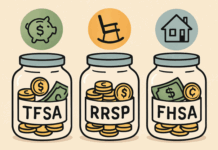You don’t need a storefront or a fleet of vans to earn steady income from real estate. You need a small, dependable service that owners value—and the discipline to run it like a real business. Property management fits that description. Done right, it’s compact, mostly online, and built on repeatable tasks you can batch after work or on Saturday mornings. Tenants get a responsive point of contact. Owners get fewer headaches. You get recurring revenue that compounds door by door.
Below is a practical, street-level playbook. No jargon. No chest-thumping. Just the steps that help a part-time manager deliver good service, keep hours in check, and make a healthy margin.
Why This Side Business Works: Recurring Revenue, Real Demand, Manageable Scope
Property management behaves a lot like a subscription. Instead of licenses or seats, you bill a monthly fee per door. It’s predictable. It stacks. And it rarely goes to zero if you do the basics well. That’s a strong foundation for a side business you can grow at your pace.
The market backdrop is supportive. Rental housing remains active across the U.S., and vacancy data suggests owners care deeply about fast turns and stable operations. According to the Census Bureau’s latest release, the national rental vacancy rate sat at 7.0% in Q2 2025, with a median asking rent of $1,494—numbers that put a premium on quick maintenance and smooth leasing because every empty day is expensive for an owner. See the government’s summary for context: Quarterly Residential Vacancies and Homeownership, Q2 2025.
There’s also the renter’s side of the story. Harvard’s Joint Center for Housing Studies reported that half of U.S. renter households were cost-burdened in 2022, with severe burdens at record levels—pressure that keeps renters sensitive to service quality and disruptions. That’s another way of saying well-run rentals matter, and good managers reduce churn. If you want a concise overview, skim America’s Rental Housing 2024.
If you’re weighing property management against other gigs, Home Business Magazine regularly covers side-income paths; their roundup of flexible ideas is a good comparison point: best side hustles from home. The difference here is that management creates long-lived client relationships and repeatable monthly work—exactly what a side business needs to feel stable.
Define a Narrow Scope You Can Deliver Every Month
The fastest way to overwork yourself is to say yes to everything. Keep your offer tight and boring in the best way.
Start with a core scope you can run in 5–8 hours a week once you’ve got a handful of units: rent reminders and collection, tenant communication, maintenance coordination with pre-vetted vendors, renewal outreach, and simple monthly owner statements. That’s your “subscription.” Then add a small set of as-needed projects—lease-only service, make-ready coordination within a set budget, and an annual rent check with comps.
Geography and partnerships help you punch above your weight. If your early clients are in the Southwest, for example, you’ll see more dust, more filter changes, and a stronger case for a seasonal maintenance plan. When a client wants more on-the-ground support than your calendar allows, collaborate with a local specialist—say a provider focused on property management in Tucson—so the relationship stays with you while the heavy lifting is handled by a team that knows the neighborhood and vendor landscape cold. You’re the coordinator; they’re the on-site engine.
Deposit Photos
To stay grounded in best practices and what other solo operators are doing, HBM has a quick primer on why this niche is appealing to home-based entrepreneurs: why property management is the perfect home business.
Pricing, Tools, and a Weekly Cadence That Won’t Wreck Your Evenings
Pricing that owners understand. Keep it simple: a monthly fee per door (flat or a small percentage of collected rent), a lease-up fee when you place a new tenant, and a clearly disclosed coordination fee when make-ready projects exceed an agreed budget. Avoid nickel-and-diming. The moment your invoices look mysterious, trust erodes.
Tools that reduce clicks. You don’t need ten apps. Pick one property management platform (tenant portal, rent collection, maintenance tickets), one e-signature tool, cloud folders for property files, and a basic CRM or spreadsheet to track owners, doors, and vendors. What saves time isn’t fancy software—it’s templates and checklists you reuse forever: move-in/move-out checklist, owner update format, vendor work-order format with photos and approval thresholds.
A weekly cadence that sets expectations. Batch tasks so you’re not context-switching every night. For instance: review new tickets Monday; send owner updates Tuesday evening; approve and dispatch work orders Thursday morning; do site visits the first Saturday of the month. Owners learn your rhythm; vendors plan around it; your hours stay contained.
As the billable work grows, your bookkeeping matters more. A quick refresher from HBM will get you organized: how to do accounting for small business. It covers the basics—source documents, reconciliations, and simple reporting—so your owner statements are clean and audit-ready.
Where the Profit Hides: Turns, Maintenance, and Renewals
Your margin doesn’t come from squeezing vendors or tacking on junk fees. It comes from predictable execution in three places.
Turns. Empty days are the enemy. Send a move-out checklist 30 days in advance, pre-schedule cleaners and handypeople, and order common supplies early (smoke detector batteries, air and refrigerator filters, bulbs, outlet covers). A one-week turn instead of three pays for your systems many times over. The owner feels it; you feel it in calmer weeks.
Maintenance. Emergencies happen; surprises shouldn’t. A quarterly safety visit (smoke/CO detectors, GFCIs, water leaks, filter swap) prevents night-of calls. Tenants appreciate the check-ins because they see you care about the basics. Owners appreciate fewer “urgent” work orders at premium rates. Document every visit with 6–8 repeatable photos and a short note in the portal.
Renewals. Happy tenants renew. Four months before lease end, ask what’s working and what isn’t. If a $150 fix saves a $2,000 vacancy, make the case. Your tone matters: “Two options here—fix for $180 and monitor, or replace for $650 with a one-year warranty. What’s your preference?” Clear choices, no pressure.
If you want to sanity-check your earnings expectations for the field in general, the Bureau of Labor Statistics lists a median annual wage of $66,700 for property, real estate, and community association managers (May 2024)—a useful benchmark that shows the market values competent management. Here’s the summary profile: Occupational Outlook Handbook: Property, Real Estate, and Community Association Managers.
Finding Your First Ten Doors Without Yelling Into The Void
You don’t need to blanket social media. You need the small group of people who already meet overwhelmed landlords.
Real estate agents. They live on referrals. Bring a one-page “what I do / what I don’t” sheet. Frame your service as a retention tool: their investor clients buy more when their rentals run smoothly. Offer a short “new landlord orientation” for their buyers—twenty minutes, five slides. That’s seeds for future doors.
Vendors. Plumbers, HVAC techs, cleaners, handypeople—these are your scouts. Pay on time, make scopes clear, and keep spare keys secure. Vendors love managers who make their day easier, and they nudge frazzled DIY landlords to call you.
Tenants. When tenants feel heard and repairs get handled, they become your quiet sales team. A text a day after a fix—“All good with the sink now?”—does more for your reputation than any ad spend. Renewals follow, and word travels.
If you want more inspiration on building a side-income funnel that fits around a day job, HBM’s category page collects practical ideas and case studies: side hustle guide & tips.
Compliance and Risk: Short, Boring, Essential
Even tiny management companies benefit from clean paperwork and clear boundaries.
Create an engagement letter that lays out scope, fees, emergency authority, and approval thresholds. Keep tenant deposits and owner funds in separate trust accounts when your state requires it. Save vendor W-9s and insurance certificates in each property’s folder. Check licensing rules with your state real estate commission rather than guessing. And protect your personal assets with a simple business structure after you speak with your accountant or attorney.
If your workload spikes or a project is outside your sandbox—say, a major remediation—don’t try to be a hero. Act as the owner’s rep, gather two bids, present options, and hand off to a specialist. You’ll protect the client and your calendar.
A Realistic Example: A Duplex That Finally Behaved
A new client hires you for a two-unit building. One side churns tenants; the other is stable but full of deferred maintenance. You start with the basics: portal set-up, rent reminders, a Saturday walk-through (filters, detectors, drips, photos), and a simple “how to submit tickets” note on the fridge. You set vendor expectations in writing: photo before/after, text on arrival, call if costs exceed a threshold. Within two weeks, the noisy unit stops generating late-night messages because small annoyances get fixed quickly. Thirty days before lease end, you suggest a modest rent increase paired with a patio light and a new fridge seal. The tenant stays. Your monthly hours drop under an hour. The owner refers a friend with another duplex. This is how the math starts to compound.
What to Measure so Owners Actually Feel Your Value
Owners don’t want dashboards—they want confidence. Share a handful of numbers every month:
- Time to turn (keys out to keys in).
- Work-order responsiveness (hours to acknowledge, days to close).
- On-time collection rate (by the 10th).
- Renewal rate (rolling 12 months).
Add one sentence of context: “Two quick fixes and a scheduled cleaner kept 2B’s gap to six days.” That tiny line tells the story better than a wall of cells. And when the market shifts—say, vacancy rates rise in your city—briefly note it and tighten your processes. The Census Bureau’s Housing Vacancies and Homeownership program posts regular updates you can reference when owners ask what you’re seeing broadly.
Growing Beyond Ten Doors Without Losing Your Mind
The next plateau isn’t sales—it’s operations. Three moves help you scale sanely.
First, standardize the move-in/move-out kit: same photo angles, same checklist, same welcome sheet (trash day, parking, ticket instructions). Consistency cuts errors.
Second, build a two-deep vendor bench in each trade. Two plumbers, two HVAC techs, two cleaners, two general handypeople. When someone’s booked, your schedule doesn’t stall.
Third, protect your calendar with a “Friday file” ritual—non-urgent questions, slow-burn owner items, and paperwork live there until you process them once a week. You’ll feel less scattered, and your average response time won’t suffer because urgent items still route through your normal cadence.
As your coverage expands to new neighborhoods or cities, be selective. Partner locally where it helps quality and speed, and keep your core promise tight: clear updates, predictable turns, and decisions backed by simple numbers.
A Quick Word on Earnings Expectations
You’re building a side business, not a lottery ticket. It takes a few months to find a rhythm and a few more to feel the compounding. That said, the field itself is well-compensated when done professionally. The U.S. Bureau of Labor Statistics pegs the median annual wage at $66,700 for property, real estate, and community association managers (May 2024). You’re not an employee, so your results depend on door count and efficiency—but it’s a solid indicator that the market pays for reliable management. Here’s the reference again for a reality check: BLS profile for property, real estate, and community association managers.
Conclusion
A profitable property management side business is built on clarity, not heroics. Offer a narrow scope you can deliver every month. Price it simply and communicate like a professional. Batch your week so the work fits around your life. Build a small bench of reliable vendors, and measure a few outcomes that matter to owners. Do that for one door, then five, then ten. The hours don’t multiply as fast as the revenue does—and you’ll have a durable, real-world business you can run from your laptop.
Find a Home-Based Business to Start-Up >>> Hundreds of Business Listings.















































